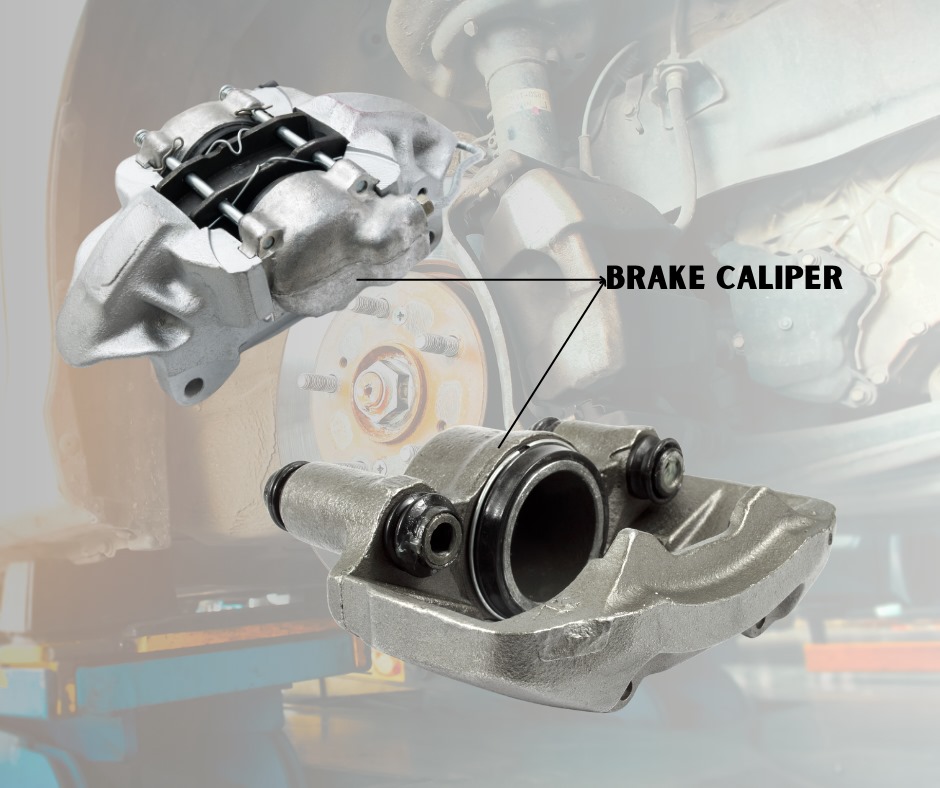Common Issues with Brake Callipers

Brake Callipers and Their Function
Brake callipers are a crucial component of a vehicle's braking system. They are responsible for applying the necessary force to the brake pads, which in turn press against the rotor to slow down or stop the vehicle. The callipers house the brake pistons and are connected to the brake pedal through a hydraulic system.
By understanding how brake callipers work, you can better diagnose and troubleshoot any issues that may arise. It's important to note that different vehicles may have different types of brake callipers, such as floating callipers or fixed callipers. Each type operates slightly differently, but the basic principles remain the same.
Identifying Symptoms of Faulty Brake Callipers
Faulty brake callipers can lead to a variety of symptoms that indicate a problem. Some common signs of faulty calipers include:
- Squealing or grinding noise when applying the brakes
- Pulling to one side when braking
- Uneven wear on the brake pads
- Leaking brake fluid
- Reduced braking performance
If you notice any of these symptoms, it's important to inspect your brake callipers for any issues.
Step-by-Step Guide to Diagnosing Common Problems
Diagnosing common problems with brake callipers can be done step-by-step to ensure accurate identification of the issue. Here is a guide to help you diagnose and troubleshoot brake calliper problems:
1. Visual Inspection: Start by visually inspecting the brake callipers for any signs of damage, such as leaks or corrosion. Check for any loose or missing bolts as well.
2. Brake Pad Inspection: Remove the wheels and inspect the brake pads for wear. Uneven wear may indicate a problem with the calliper.
3. Brake Fluid Check: Check the brake fluid level and quality. Contaminated or low brake fluid can affect the calliper's performance.
4. Piston Operation: Test the operation of the brake calliper pistons. They should move smoothly and evenly when the brake pedal is pressed.
5. Brake Line Inspection: Inspect the brake lines for any signs of damage or leaks. Damaged brake lines can affect the calliper's performance.
By following these steps, you can narrow down the possible issues with your brake callipers and proceed with the necessary repairs.
Effective Solutions for Repairing Brake Callipers
Repairing faulty brake callipers often involves replacing or repairing specific components. Here are some effective solutions for common brake calliper issues:
- Brake Pad Replacement: If the brake pads are worn or damaged, they should be replaced. Ensure the new pads are properly aligned and positioned within the calliper.
- Brake Fluid Flush: If the brake fluid is contaminated or low, a brake fluid flush may be necessary to remove any impurities and restore proper hydraulic pressure.
- Piston Replacement: Faulty brake calliper pistons can be replaced if they are sticking or not operating smoothly. Ensure the new pistons are properly lubricated.
- Brake Line Repair: Damaged brake lines should be repaired or replaced to restore proper fluid flow and pressure to the calliper.
It's important to follow manufacturer guidelines and specifications when performing any repairs on brake callipers.
Preventive Measures and Maintenance Tips
To prevent brake calliper issues and ensure optimal performance, consider the following preventive measures and maintenance tips:
- Regular Inspections: Perform visual inspections of the brake callipers and related components to catch any issues early.
- Brake Pad Maintenance: Replace brake pads as recommended by the manufacturer to prevent excessive wear and damage to the callipers.
- Proper Lubrication: Apply brake lubricant to the contact points between the calliper and brake pads to prevent sticking or uneven operation.
- Brake Fluid Maintenance: Regularly check the brake fluid level and quality, and flush the system as recommended by the manufacturer.
- Avoid Overheating: Excessive heat can damage the brake callipers. Avoid prolonged heavy braking and allow the brakes to cool down during long downhill descents.
By following these preventive measures and performing regular maintenance, you can extend the lifespan of your brake callipers and ensure optimal braking performance.
Drop us a message from our facebook page or Chat us using the widget on the right to order brake callipers for your car.

 Loading..
Loading..